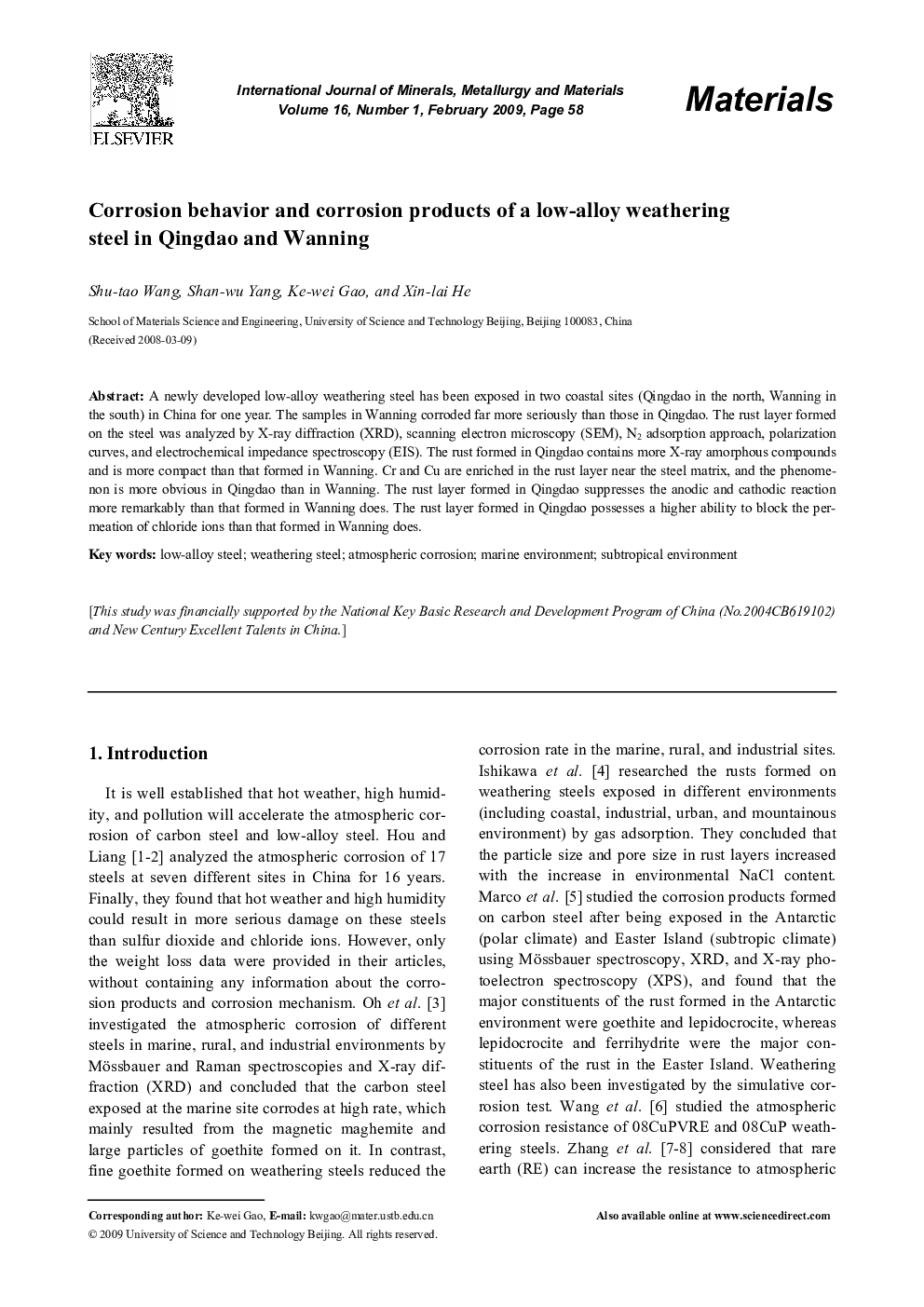| Article ID | Journal | Published Year | Pages | File Type |
|---|---|---|---|---|
| 1602505 | International Journal of Minerals, Metallurgy and Materials | 2009 | 7 Pages |
Abstract
A newly developed low-alloy weathering steel has been exposed in two coastal sites (Qingdao in the north, Wanning in the south) in China for one year. The samples in Wanning corroded far more seriously than those in Qingdao. The rust layer formed on the steel was analyzed by X-ray diffraction (XRD), scanning electron microscopy (SEM), N2 adsorption approach, polarization curves, and electrochemical impedance spectroscopy (EIS). The rust formed in Qingdao contains more X-ray amorphous compounds and is more compact than that formed in Wanning. Cr and Cu are enriched in the rust layer near the steel matrix, and the phenomenon is more obvious in Qingdao than in Wanning. The rust layer formed in Qingdao suppresses the anodic and cathodic reaction more remarkably than that formed in Wanning does. The rust layer formed in Qingdao possesses a higher ability to block the permeation of chloride ions than that formed in Wanning does.
Keywords
Related Topics
Physical Sciences and Engineering
Materials Science
Metals and Alloys
Authors
Shu-tao Wang, Shan-wu Yang, Ke-wei Gao, Xin-lai He,
